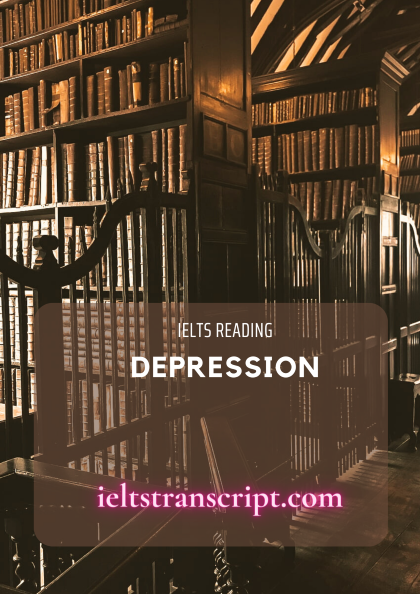- Đối với sản phẩm có giá: Sau khi chúng tôi ghi nhận thông tin đã thanh toán sản phẩm của bạn, sản phẩm sẽ được mở khóa và bạn có thể xem trực tiếp và tải tài liệu sản phẩm.
- Đối với thành viên trả phí: Bạn có thể mua và thanh toán sản phẩm với giá 0đ để tải tài liệu sản phẩm.
- Bạn có thể liên hệ với chúng tôi để được hỗ trợ mở khóa sản phẩm sớm nhất.
IMPROVING PATIENT SAFETY
- Chúng tôi chấp nhận các phương thức thanh toán sau đây: Thẻ tín dụng, thẻ ghi nợ, PayPal, chuyển khoản ngân hàng và tiền mặt.
Chúng tôi sẽ không thu thêm phí cho bất kỳ hình thức thanh toán nào.
- Nếu bạn gặp vấn đề về sản phẩm của chúng tôi trong thời gian sử dụng, vui lòng liên hệ với chúng tôi để được hỗ trợ xử lý sớm nhất nhé.
Xem trước mẫu
Improving Patient Safety
Packaging One of the most prominent design issues in pharmacy is that of drag packaging and patient information leaflets (Pits). Many letters have appeared in The Journal’s letters pages over the years from pharmacists dismayed at the designs of packaging that are “accidents waiting to happen”.
Packaging design in the pharmaceutical industry is handled by either in-house teams or design agencies. Designs for over-the-counter medicines, where characteristics such as attractiveness and distinguish-ability are regarded as significant, are usually commissioned from design agencies. A marketing team will prepare a brief and the designers will come up with perhaps six or seven designs. These are whittled down to two or three that might be tested on a consumer group. In contrast, most designs for prescription-only products are created in-house. In some cases, this may simply involve applying a company’s house design (ie, logo, colour, font, etc). The chosen design is then handed over to design engineers who work out how the packaging will be produced.
Design considerations The author of the recently published “Information design for patient safety,” Thea Swayne, tracked the journey of a medicine from manufacturing plant, through distribution warehouses, pharmacies and hospital wards, to patients’ homes. Her book highlights a multitude of design problems with current packaging, such as look-alikes and sound-alikes, small type sizes and glare on blister foils. Situations in which medicines are used include a parent giving a cough medicine to a child in the middle of the night and a busy pharmacist selecting one box from hundreds. It is argued that packaging should be designed for moments such as these. “Manufacturers are not aware of the complex situations into which products go. As designers, we are interested in not what is supposed to happen in hospital wards, but what happens in the real world,” Ms Swayne said.
Incidents where vein has been injected intrathecally instead of spine are a classic example of how poor design can contribute to harm. Investigations following these tragedies have attributed some blame to poor typescript.
Safety and compliance Child protection is another area that gives designers opportunities to improve safety. According to the Child Accident Prevention Trust, seven out of 10 children admitted to hospital with suspected poisoning have swallowed medicines. Although child-resistant closures have reduced the number of incidents, they are not: fully child-proof. The definition of such a closure is one that not more than 15 percent of children aged between 42 and 51 months can open within five minutes. There is scope for improving what is currently available, according to Richard Mawle, a freelance product designer. “Many child-resistant packs are based on strength. They do not necessarily prevent a child from access, but may prevent people with a disability,” he told The Journal. “The legal requirements are there for a good reason, but they are not good enough in terms of the users,” he said. “Older people, especially those with arthritis, may have the same level of strength as a child,” he explained, and suggested that better designs could rely on cognitive skills (eg, making the opening of a container a three-step process) or be based on the physical size of hands.
Mr. Mawle worked with GlaxoSmithKline on a project to improve compliance through design, which involved applying his skills to packaging and PILs. Commenting on the information presented, he said: “There can be an awful lot of junk at the beginning of PILs. For example, why are company details listed towards the beginning of a leaflet when what might be more important for the patient is that the medicine should not be taken with alcohol?”
Design principles and guidelines Look-alike boxes present a potential for picking errors and an obvious solution would be to use colours to highlight
...Nâng cao sự an toàn cho bệnh nhân
Bao bì Một trong những vấn đề thiết kế đáng chú ý nhất trong ngành dược phẩm là bao bì thuốc và tờ cung cấp thông tin cho bệnh nhân (PILs). Nhiều lá thư đã xuất hiện trong các trang đăng thư của Tạp chí The Journal những năm qua gửi từ các dược sĩ bày tỏ thất vọng về thiết kế bao bì, cho rằng “các tai nạn đang chực chờ xảy ra”.
Thiết kế bao bì trong ngành dược phẩm do các nhóm nội bộ hoặc hãng thiết kế đảm nhận. Các thiết kế cho thuốc không kê đơn, trong đó các đặc điểm được xem là quan trọng như sự thu hút và khả năng-phân biệt, thường được giao phó cho các hãng thiết kế. Một đội ngũ marketing sẽ chuẩn bị một bản yêu cầu tóm tắt và các nhà thiết kế sẽ đưa ra có lẽ sáu hoặc bảy mẫu thiết kế. Chúng được rút gọn xuống còn hai hoặc ba mẫu và có thể được thử nghiệm trên một nhóm người dùng. Ngược lại, hầu hết thiết kế cho các sản phẩm chỉ-bán-theo-đơn được tạo ra trong nội bộ công ty. Trong một số trường hợp, mọi việc có thể chỉ đơn giản là áp dụng thiết kế đặc trưng của công ty (ví dụ: logo, màu sắc, phông chữ, v.v.). Mẫu thiết kế được chọn sau đó sẽ được chuyển giao cho các kỹ sư thiết kế, những người tìm cách để sản xuất ra bao bì.
Những cân nhắc về thiết kế Tác giả của cuốn “Thiết kế thông tin vì sự an toàn của bệnh nhân” được xuất bản gần đây, Thea Swayne, người đã theo dõi hành trình của một loại thuốc từ nhà máy sản xuất, qua các nhà kho phân phối, nhà thuốc và khu bệnh viện, đến nhà bệnh nhân. Cuốn sách của cô nêu bật vô số vấn đề về thiết kế với các bao bì hiện tại, chẳng hạn như nhìn giống nhau và nghe giống nhau, kích thước của loại nhỏ và chói sáng trên tấm lá thiếc vỉ thuốc. Các tình huống sử dụng thuốc bao gồm một phụ huynh cho con uống thuốc ho lúc nửa đêm và một dược sĩ bận rộn chọn ra một trong số hàng trăm hộp thuốc. Có ý kiến cho rằng bao bì nên được thiết kế phục vụ những thời điểm như vậy “Các nhà sản xuất không ý thức được hết các tình huống phức tạp mà sản phẩm được sử dụng. Với tư cách là những nhà thiết kế, vấn đề chúng tôi quan tâm đến không phải những gì xảy ra trong các khu bệnh viện, mà là những gì xảy ra trong thế giới thực, ” Swayne nói.
Những sự cố trong đó tĩnh mạch được tiêm vào nội tủy mạc thay vì cột sống là một ví dụ điển hình cho thấy thiết kế kém có thể góp phần gây hại như thế nào. Các cuộc điều tra sau những thảm kịch này đã quy một số trường hợp cho nguyên nhân là lỗi đánh máy.
An toàn và tuân thủ Bảo vệ trẻ em là một lĩnh vực khác tạo cơ hội cho các nhà thiết kế để cải thiện sự an toàn. Theo tổ chức Phòng ngừa Tai nạn Trẻ em, cứ 10 trẻ nhập viện do nghi ngờ ngộ độc thì có 7 trẻ đã nuốt phải thuốc. Mặc dù việc đóng gói ngăn ngừa-trẻ em đã làm giảm số lượng sự cố, nhưng chúng không phải là: hoàn toàn ngăn được trẻ em. Định nghĩa của kiểu đóng gói như vậy là loại đáp ứng tiêu chí không quá 15 phần trăm trẻ em từ 42 đến 51 tháng tuổi có thể mở được trong vòng năm phút. Theo Richard Mawle, một nhà thiết kế tự do, vẫn còn nhiều khả năng để cải thiện những gì hiện có. “Nhiều đóng gói ngăn ngừa-trẻ em dựa trên sức mạnh. Chúng chưa chắc đã ngăn cản được một đứa trẻ tiếp cận, nhưng có thể ngăn cản những người khuyết tật,” ông nói với The Journal. “Các yêu cầu pháp lý là có lý do chính đáng, nhưng chúng không đủ tốt xét trên quan điểm người dùng,” ông nói. “Những người lớn tuổi, đặc biệt là những người bị viêm khớp, sức mạnh có thể chỉ tương đương với một đứa trẻ,” Ông giải thích, và gợi ý rằng các thiết kế tốt hơn có thể dựa trên các kỹ năng nhận thức (ví dụ: thiết kế việc mở gói chứa thuốc theo một quy trình ba bước) hoặc dựa trên kích thước vật lý của bàn tay.
Ông Mawle đã làm việc với GlaxoSmithKline trong một dự án nhằm cải thiện sự tuân thủ thông qua thiết kế, liên quan đến việc áp dụng các kỹ năng của ông vào bao bì và PILs (tờ hướng dẫn cung cấp thông tin cho bệnh nhân). Bình luận về thông tin được trình bày, ông nói: “Có thể có lượng nhiều khủng khiếp thông tin vô bổ ở phần đầu của PIL. Lấy ví dụ, tại sao thông tin chi tiết về công ty được
...Để xem được đầy đủ nội dung và tải dữ liệu, bạn phải trở thành thành viên của chúng tôi và trả phí cho tài liệu (nếu có)











